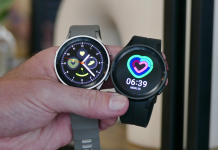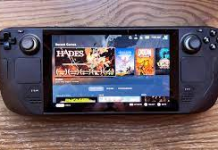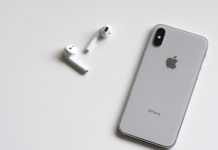I will occasionally choose a random device from the cupboard and use it for a week or two. A lot of the time out of random curiosity and to contrast “vintage” things with newer, superior ones. My Google Pixel 5 caught my attention recently, so I restored the device to factory settings, updated it to Android 12, and have been using it as my primary phone for the past few days.
The encounter was wonderful. I don’t think I could entirely move to the Pixel 5 because to my large hands (the iPhone 13 Pro Max doesn’t feel out of place) and preference for large screens. However, considering how excellent this “tiny” phone is (by 2022 standards), I admit I was tempted. With the Pixel 5, it’s simple for me to complete most tasks with just one hand. On Android 12, the mid-range chipset is performing better than before, and this phone is still unique compared to the competition.
I was most upset that after just a year, Google changed the design and dimensions of the Pixel 5. The Pixel 5a, which features a 6.3-inch screen, is now the smallest phone in the company’s lineup. With the forthcoming 6A, Google deserves credit for bringing things down a bit. However, when using A-series devices, you forego compliments. such like the wireless charging and 90Hz screen. The Pixel 5 may be the final device of its kind in Google’s portfolio in many aspects. Plenty for straight edges, too.
Now that I think about it, I wish Google would preserve the 5 as a “iPhone SE”-style product that receives frequent hardware improvements every two years – without losing what makes it so great. Let’s talk about some of the Pixel 5’s advantages.
Design And Components:
The Pixel 5’s 6-inch OLED display and thin, symmetrical bezels help to make the phone pleasant to hold in one hand and easy to use. The body of the 5s has a textured “bio-resin” coating, which gives it a distinctive feel and a secure grip when worn all day. It is simple to tell the two apart by touch because the volume button has the same texture as the power button while the latter is made of glossy metal. The Pixel 5 is one of those phones that can be used without a case without raising too many eyebrows due to its size and ergonomic feel.
Prior models in the series frequently featured high-end textures and materials that make phones stand out, before Google entered the joint “glass sandwich” design with the Pixel 6 and 6 Pro. For the black model of the Pixel 2, the back cover felt somewhat rough. The Pixel 4 had side bars for the follicles. However, following the Bio Resin 5 (I still love the Sorta Sage green road with this finish), Google chose for a more straightforward feel with the previous year’s flagship.
Screen:
On the surface, the OLED display of the Pixel 6 could appear to be flawless. However, it’s really just ordinary. Reddit users have posted numerous threads criticizing the uniformity problems, an unsightly green tinge at low brightness levels, and other problems. These problems are not present on the amazing LPTO panel of the Pixel 6 Pro, thus Google obviously compromised in order to keep the price of the 6 at $599.
Even the screen of the Pixel 5 appears to be of somewhat greater quality than the Pixel 6 it replaced. Both panels operate at 90Hz, however in my opinion the 5 white point screen has a slightly nicer overall picture and uniformity. This can sometimes be determined by the contrast between different units, but I anticipate the Pixel 7 doing better in this regard.
Rear Sensor With Pixel Imprint:
I’m still dissatisfied that the fingerprint scanner was moved from the back of the phone—where the index finger would typically rest while holding it—to the bottom of the screen by all phone manufacturers at the same time. The in-display sensor on the Pixel 6 and 6 Pro never quite matched Google’s Pixel Imprint scanners, which have likely been the fastest and most reliable in the whole Android ecosystem — even after Google enhanced performance with software updates.
Stable Camera Operation:
The Pixel 5 and its predecessors’ 12MP main camera’s computational photography has been improved by Google over a number of years. The Pixel 5 is a reliable shooter even though it lacks the dynamic range of the Pixel 6/6 Pro and doesn’t have features like Real Tone or Magic Eraser. You always know what you’re getting with the Pixel 6 range, which isn’t always the case. Although I don’t like the unappealing background blur that occasionally results from a larger 6 sensors, Google will definitely make improvements.
The Pixel 5 Is Not Flawless
While I’m generally happy with the Pixel 5’s responsiveness and overall smooth performance on Android 12, there are still times when the mid-range Snapdragon 765G processor runs into a wall and freezes. When you take a picture, there will still be the annoying wait while the phone processes the picture. If you’re trying to multitask too much, you can also suspend the 5.
Although I love the way the Pixel 5 looks and feels, Google’s hardware quality guarantee isn’t always the best. The screen and body of many devices have a very little space between them. After the phone was released, the firm said that the gap was unconcerned with anything, but this is just the kind of little detail that irritates me.
Digging In More Details
next there Even though Google tried to make it better with a file Setting called “Adaptive Audio,” that horrible headphone behind the screen still seems minimal in most circumstances. There were costs associated with obtaining these symmetrical edges.
However, even with these drawbacks, there is something unique about this phone. I’m about to purchase a new, unlocked Pixel 5s from Woot, which sells for $450. It appears that Google has located extra stock in a repository. It appears that compact phones are in decline as Apple’s iPhone mini is rumored to be dropped from the future iPhone 14 lineup (again). This makes it a tempting time to purchase. Google’s main warning sign is that software support for the Pixel 5 will expire in October 2023.
Perhaps, though, by that time, Google will have redesigned a smaller Pixel that doesn’t scrimp on hardware features and doesn’t stealthily follow in the footsteps of its larger siblings.







